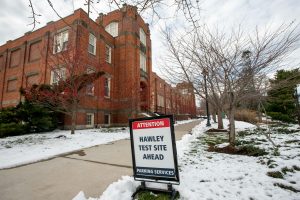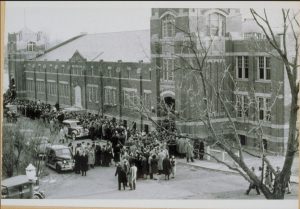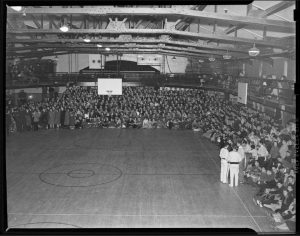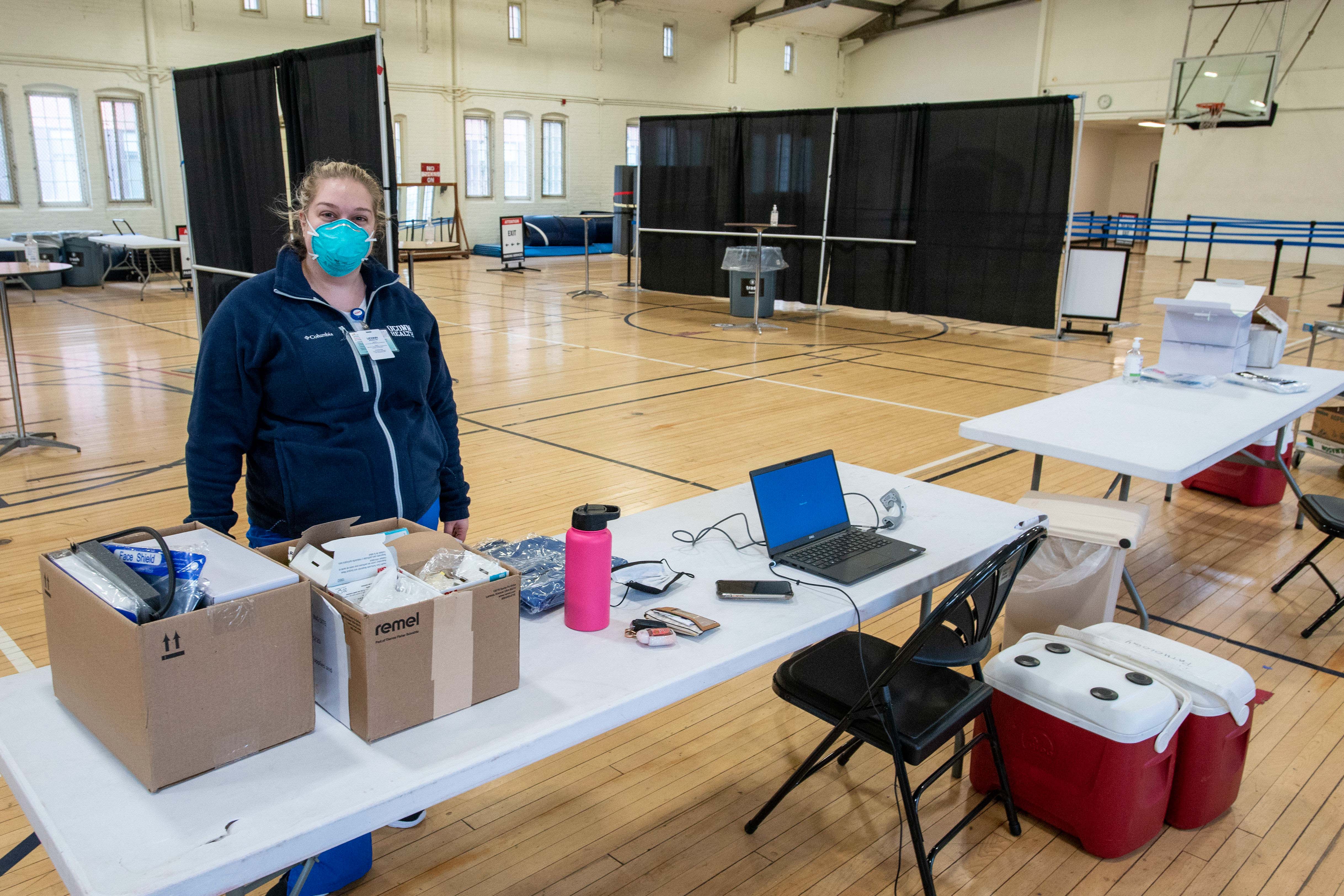UConn’s venerable Hawley Armory has been utilized for a multitude of purposes since it was built 106 years ago. It was the home of the school’s basketball team from 1915 to 1947, with a seating capacity of 1,400. School dances, theater productions, swim meets, and even town meetings all called Hawley Armory home during its early days.
Since a 1990s renovation, it has been used for fitness programs by UConn Recreation and the Department of Allied Health Sciences. It is also the current home of the Veterans Affairs and Military Programs.
And now, its newest use, as a site for on-campus employee COVID-19 testing, brings the history of the building back full circle to its namesake — Willis N. Hawley.

Born in 1875, Hawley attended Newtown Academy before enrolling at UConn’s precursor – the Storrs Agricultural College – in the fall of 1895. He played on one of the school’s original football teams and was a member of the Shakespearean Club.
Hawley’s aptitude for military training resulted in him becoming a first lieutenant of the cadet company and soon after his 1898 graduation, he joined the United States Army.

The eight-month Spanish-American War was in full swing, and four seniors from the class of 1898, including Hawley, had enlisted in the Army along with five recent alumni.
Hawley became First Sergeant in Company H of the Third Connecticut Volunteer Infantry and returned to Storrs in September 1898 to visited friends during a week-long furlough. It would be his last visit to his alma mater.
He died of typhoid fever on Nov. 19, 1898 at the Red Cross Hospital in Philadelphia. There were over 20,000 cases of the disease among military recruits during the war, which resulted in over 1,500 deaths – many more than the number that died in the battles in Cuba.
The new campus building was named in his memory in when it was constructed in 1914.
From the epidemic of typhoid fever to the current COVID-19 pandemic, employee testing is now conducted in Hawley’s namesake three times a week, which is another resonant echo of its past. During the 1918-1920 flu pandemic that swept the world, students were required to be examined every morning for signs of illness by a doctor and nurse at the armory while class was in session.

A hundred years later, a different pandemic has altered many aspects of daily life, including making testing for the illness an essential part of normal operations. An outside location at UConn’s Depot Campus was the original site for employee COVID-19 testing, but with the colder months approaching, an indoor location was more appropriate.
“What makes Hawley Armory the best site for this purpose is its easy access for faculty and staff that are on campus,” says UConn Health Vice President of Ambulatory Services Anne Horbatuck. “The other thing is that it needed to be close to the Divisions of Athletics if we do testing for them.”
Several sites on campus were considered for the testing, and with the cooperation of Associate Vice President and Chief Human Resources Office Christopher Delello and his staff, Hawley Armory was determined to be the best fit.
“The key was the open space of the building, which allows for nice safe practices,” says Horbatuck, who noted the site had to be approved by the Connecticut Department of Public Health. “We are able to make sure we have all the proper safety precautions in place there, like distancing and hand washing.”



